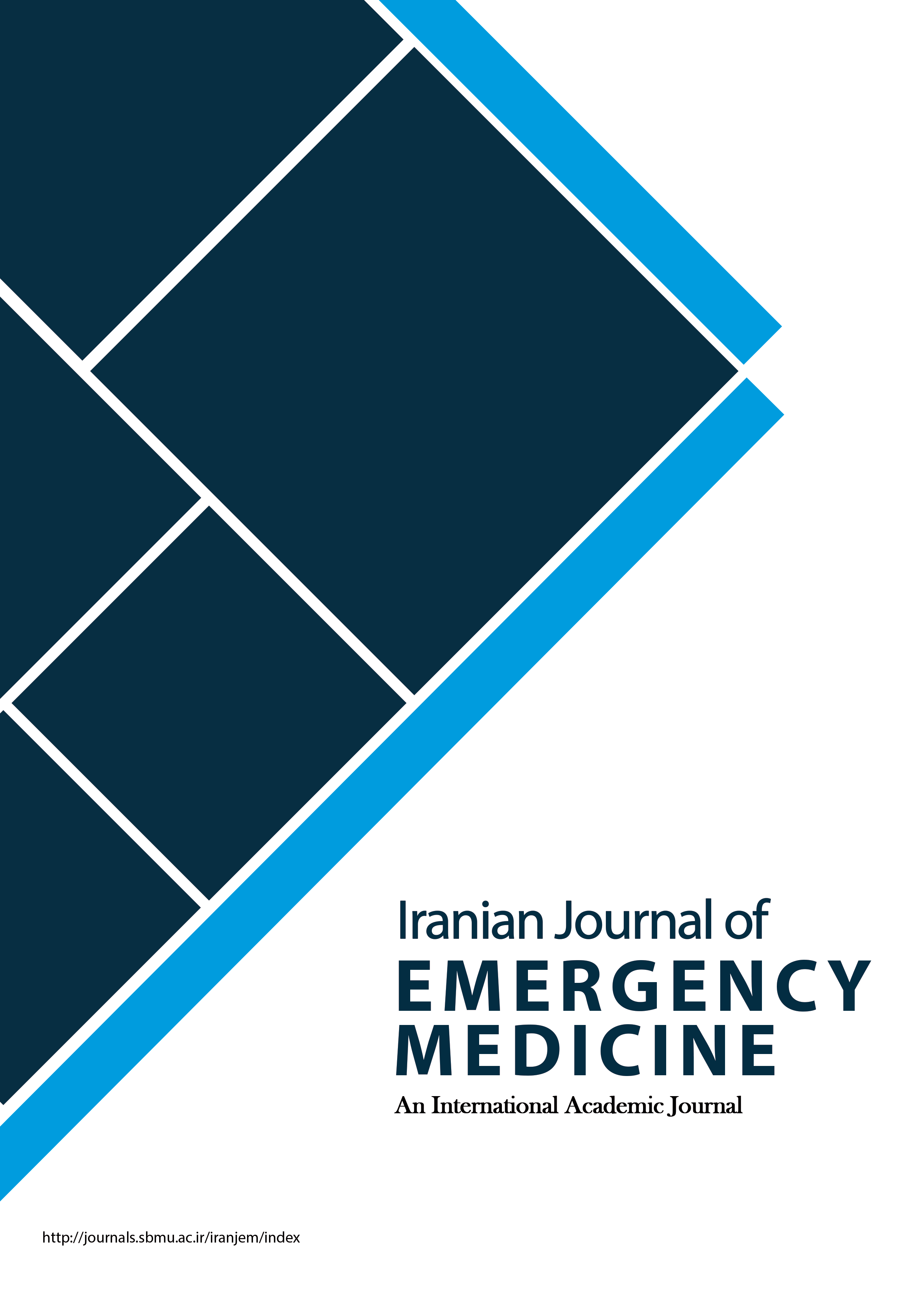Job Burnout among the Emergency Department Nurses of Medical Training Centers Affiliated to Mazandaran University of Medical Sciences
Iranian Journal of Emergency Medicine,
Vol. 3 No. 4 (2016),
29 October 2016,
Page 131-125
https://doi.org/10.22037/ijem.v3i4.13761
Introduction: Increased environmental demand and decreased ability of an individual for responding to them raises mental pressures and leads to job burnout. Since job burnout has never been evaluated in nurses working in hospitals affiliated to Mazandaran University of Medical Sciences, the present study was carried out with the aim of evaluating job burnout rate in nurses working in emergency departments (EDs) of hospitals affiliated to Mazandaran University of Medical Sciences. Methods: The present cross-sectional study included all of the nurses working in EDs of 3 teaching hospitals affiliated to Mazandaran University of Medical Sciences using consecutive sampling. The standard Maslach and Jackson questionnaire was used for assessment of job burnout. SPSS version 20 was used for analyzing data. Results: A total of 93 nurses with the mean age of 32.48 ± 8.1 were evaluated (72% female). The highest frequency belonged to 20-30 years age range (48.9%) and 5-9 years job experience (39.3%). Based on the results of rotated factor matrix, the load of emotional exhaustion, lack of personal success, and depersonalization in prevalence of job burnout was 7.42, 4.89 and 2.45 respectively. Mean intensity of emotional exhaustion was 33.19 ± 14.35 (0 – 54), depersonalization was 4.91 ± 5.27 (0 – 20) and lack of personal success was 29.58 ± 8.57 (8 – 45). Conclusion: Based on the findings of this study, all the nurses working in the evaluated EDs showed degrees of job burnout. The highest load in prevalence of job burnout belonged to emotional exhaustion, lack of personal success, and depersonalization, respectively. The hospital in which they worked, age, sex, and job experience did not significantly affect the intensity of job burnout.



